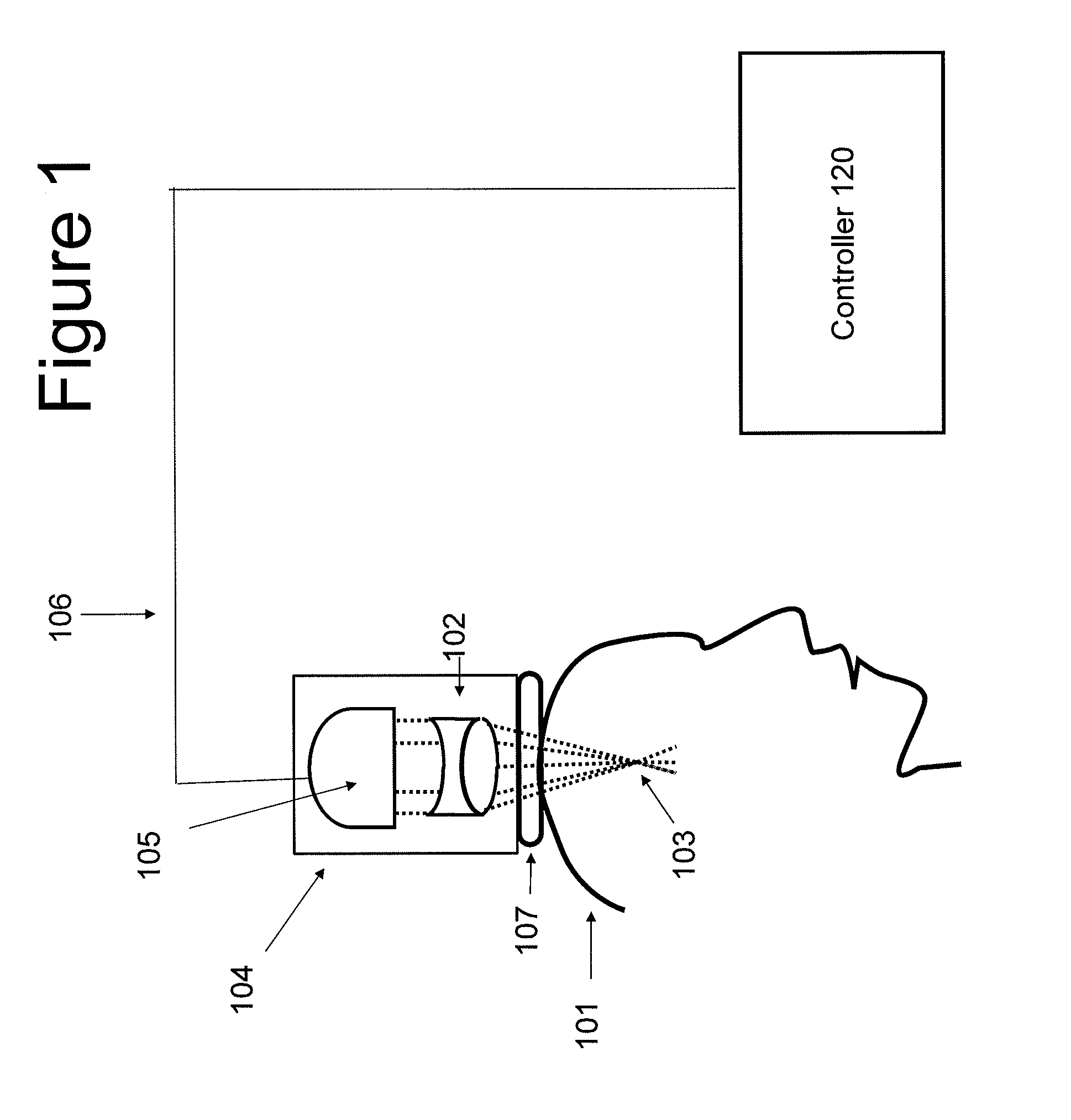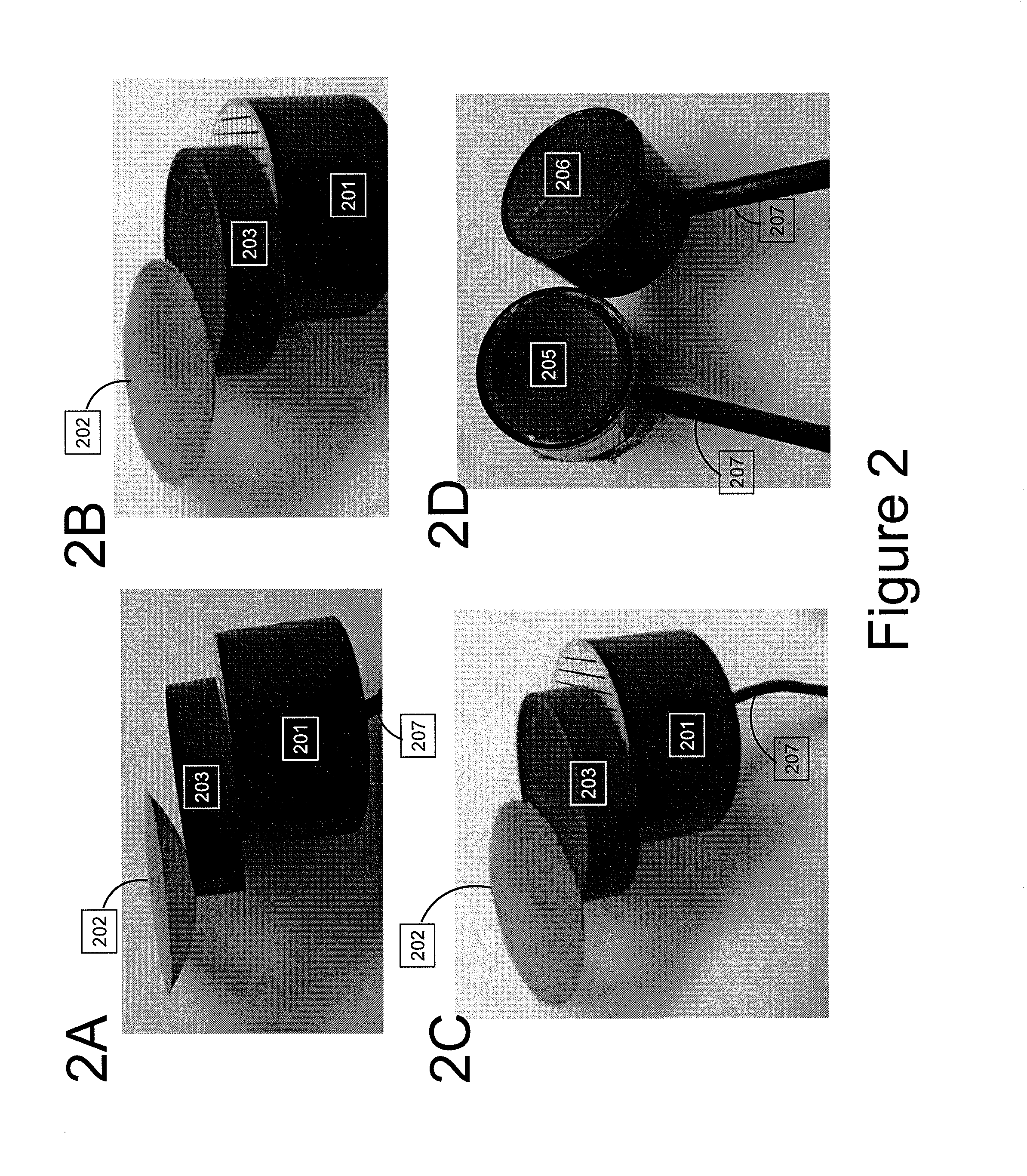Focused transcranial ultrasound systems and methods for using them
a transcranial ultrasound and focused technology, applied in the field of focused transcranial ultrasound systems, can solve the problems of large and generally unportable power and control components, limited single concave lens focusing system for ultrasound, and important limitations of phased arrays for transcranial ultrasound delivery, etc., to achieve high-focused ultrasound, reduce standing waves, and short focal distance
- Summary
- Abstract
- Description
- Claims
- Application Information
AI Technical Summary
Benefits of technology
Problems solved by technology
Method used
Image
Examples
example 1
Focused Ultrasound (FUS) Waveform Generation
[0085]In an exemplary embodiment, transcranial ultrasonic neuromodulation waveforms may be generated using a two-channel, 2 MHz function generator (e.g., BK Precision Instruments) Channel one is set to deliver ultrasound at a pulse repetition frequency (PRF) of 1.0 kHz and channel two is set to drive the transducer at a 0.5 MHz acoustic frequency (Af) in a bursting mode with channel one serving as an external trigger for channel two. The pulse duration (PD) of the waveform may be set to 0.36 msec by adjusting the number of cycles per pulse (c / p) on channel two to 180 while the stimulus duration (0.5 sec) is set by adjusting the number of pulses (np) on channel one to 500. The output of channel two is sent through a 40 W linear RF amplifier (e.g., E&I 240L; Electronics & Innovation) before being sent to a custom designed focused ultrasound transducer (e.g., Blatek, College Station Pa.) having a center frequency (fc) of 0.5 MHz, a diameter (...
example 2
Modeling of Acoustic Pressure Fields in the Brain with Finite Element Method Simulations
[0086]To gain insight regarding the intracranial spatial patterns and resolution of US induced pressure waves, a simple model was constructed using the finite element method (FEM) with COMSOL Multiphysics software (COMSOL, Inc., Burlington, Mass.). The modeling domain consisted of a circle (r=9 cm) to approximate the brain encompassed by a 5 mm thick annulus representing the skull, and a larger annulus (r=15 mm) outside the skull to provide an outer boundary of skin and acoustic coupling gel. This simple 2D geometry approximates the head as an infinite cylinder that is valuable for developing an understanding of the basic insertion behavior of US as it propagates across several model tissue layers (skin and skull) into the brain. The density (p) of brain was specified as 1,030 kg / m3 and the speed of sound (c) was 1550 m / sec. For the skull, p was set to 1,912 kg / m3 and c was estimated as 2,300 m / s...
example 3
Quantitative Acoustic Field Mapping
[0091]Measurements of an acoustic intensity profile of the waveform may be done using a calibrated hydrophone (e.g., HNR-0500, ONDA Corporation, Sunnyvale Calif.) whose signal was amplified by an AH-1100 preamplifier (e.g., Onda Corporation). The hydrophone, US transducer, and skull fragment may be positioned within an acrylic tank (e.g., 15 gallon acrylic tank). The hydrophone may be mounted on a three-axis stage (e.g., LTS300, Thorlabs Inc, Newton N.J.) using an assortment of optomechanical components (e.g., Edmund Optics Inc., Barrington, N.J. and Thorlabs Inc., Newton, N.J.). The US transducer and skull fragment may be similarly positioned. Custom software may be utilized to control the three-axis stage as well as the timing of transducer excitation and recording of the corresponding waveform as measured by the hydrophone. Acoustic field scans can be performed at spatial intervals, for instance, 400 μm (2 to 122 mm away from transducer in a 10....
PUM
 Login to View More
Login to View More Abstract
Description
Claims
Application Information
 Login to View More
Login to View More - R&D
- Intellectual Property
- Life Sciences
- Materials
- Tech Scout
- Unparalleled Data Quality
- Higher Quality Content
- 60% Fewer Hallucinations
Browse by: Latest US Patents, China's latest patents, Technical Efficacy Thesaurus, Application Domain, Technology Topic, Popular Technical Reports.
© 2025 PatSnap. All rights reserved.Legal|Privacy policy|Modern Slavery Act Transparency Statement|Sitemap|About US| Contact US: help@patsnap.com



